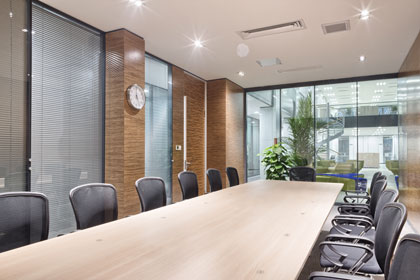Renovating a workspace is one of the most effective ways to boost productivity, morale, and company culture. Whether you’re upgrading your office layout, modernizing infrastructure, or reimagining an industrial site, the process demands the right equipment—from power tools and scaffolding to specialized machinery. But one key question often arises early in the planning process: Should your business hire or buy the equipment needed for the renovation?
While both approaches have their advantages, choosing the right one depends on your project’s scale, budget, and long-term operational goals. Let’s explore the main benefits of each option and how to make an informed decision.
The Case for Hiring Equipment
Renting or leasing equipment can be a highly strategic choice, especially for short-term renovation projects. The most obvious advantage is cost-efficiency. Instead of making a large upfront investment, your business can pay only for what it needs, when it needs it. This allows you to keep cash flow steady and allocate funds toward other priorities, such as design, labor, or technology upgrades.
Another major benefit of hiring is access to the latest technology. A professional equipment hire company frequently update their inventories, offering the newest and most efficient models. This means you can use cutting-edge tools without worrying about depreciation or obsolescence—a crucial consideration in industries where technology evolves rapidly.
Maintenance and support are also handled by the supplier. When you hire equipment, you’re typically covered for servicing, repairs, and replacement in case of malfunction. This eliminates unexpected downtime and reduces administrative hassle, which is invaluable during a renovation when timing is critical.
Finally, equipment rental offers flexibility. You can scale your toolset up or down depending on project demands. For example, if your workspace renovation expands mid-project, you can quickly add more equipment without a long-term financial commitment.
The Case for Buying Equipment
Purchasing equipment outright can be a smart investment for companies planning ongoing renovations, frequent facility upgrades, or long-term use across multiple projects. The key benefit here is ownership. Once you’ve bought the equipment, it becomes an asset that adds value to your business. There’s no need to worry about rental fees or return deadlines—you can use it whenever and however you want.
Over time, buying can be more cost-effective than hiring, particularly for businesses that renovate regularly or maintain in-house facilities. For example, construction firms, manufacturers, or property management companies often find that owning essential tools like lifts, compressors, or measuring instruments saves money in the long run.
Ownership also allows for greater customization. When you buy your equipment, you can modify or upgrade it to suit specific operational needs—something that’s rarely possible with hired gear. This can lead to improved efficiency, especially in specialized work environments.
Furthermore, tax benefits can make ownership appealing. Many regions allow businesses to claim depreciation or other deductions on purchased equipment, reducing the overall financial burden. This can offset some of the initial costs and make buying a more viable option for well-capitalized companies.
Finding the Right Balance
For many businesses, the best approach lies somewhere in between. You might buy the tools you use most frequently—like drills, safety gear, or lighting systems—and hire specialized or high-cost equipment only when necessary. This hybrid strategy combines the long-term value of ownership with the flexibility and convenience of hiring.
Before making a decision, evaluate a few key factors:
- Duration of use: How long will you need the equipment?
- Frequency: Will it be used again for future projects?
- Budget and cash flow: Can your business absorb the upfront cost?
- Maintenance and storage: Do you have the capacity to care for and store it?
Answering these questions can help you determine whether hiring, buying, or a mix of both best aligns with your renovation goals.
Conclusion
Renovating your workspace is a major step toward improving efficiency and creating an environment that supports innovation and growth. Whether you decide to hire or buy equipment, the key is to think strategically about your company’s long-term needs and financial flexibility. Hiring provides convenience, modern technology, and lower short-term costs, while buying offers control, customization, and long-term value.
Ultimately, the right decision is not just about equipment—it’s about building a smarter, more agile business ready to thrive in the modern workspace.



